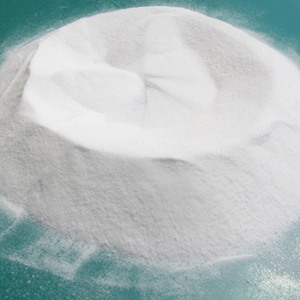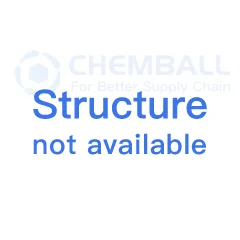Potassium Nitrate
Definition of Potassium Nitrate:
Potassium nitrate is mainly divided into agricultural grade potassium nitrate, industrial grade potassium nitrate and high-purity potassium nitrate. Potassium nitrate is widely used in the agricultural market, and potassium nitrate is a binary compound fertilizer. Potassium nitrate is a chlorine-free potassium and nitrogen compound fertilizer. The total content of plant nutrients potassium and nitrogen can reach about 50%, and it has good physical and chemical properties. Potassium nitrate applied to tobacco has high fertilizer efficiency, easy absorption, promotes early emergence of seedlings, increases tobacco yield, and plays an important role in improving tobacco quality. Can react with hydrochloric acid.

Application fields of Potassium Nitrate:
1. Used as analytical reagents and oxidants, and also used in the synthesis of potassium salts and the preparation of explosives.
2. In the food industry, it is used as a coloring agent, a color-retaining agent, an antimicrobial agent, and a preservative.
3. It is the raw material for making black gunpowder, such as mine gunpowder, ignition wire, firecrackers, etc. Also used in fireworks to produce purple sparks. Mechanical heat treatment as a salt bath for quenching. The ceramic industry is used to manufacture enamel and color medicine. Used as glass clarifying agent. It is used in the manufacture of glass bulbs for automobile lamps, glass bulbs for optical glass picture tubes, etc. The pharmaceutical industry is used in the production of penicillin potassium salt, rifampin and other drugs. For making cigarette paper. used as a catalyst. Mineral dressing agent. Used as a compound fertilizer for crops and flowers.
4. Potassium nitrate is also a coloring agent allowed in China. It is reduced to potassium nitrite due to the action of bacteria in meat products and has the effect of color protection and bacteriostasis. China stipulates that it can be used in meat products, the maximum use amount is 0.5g/kg, and the residual amount shall not exceed 0.03g/kg.
5. Used in the manufacture of fireworks, matches, ceramic glazes, fertilizers, etc.
6. Industrial potassium nitrate is also widely used in the production process of tempered glass.
Handling of Potassium Nitrate:
Precautions for operation: Closed operation and enhanced ventilation. Operators must undergo special training and strictly abide by operating procedures. It is recommended that the operator wear a hood-type electric air-supplied filtering dust respirator, polyethylene protective clothing, and neoprene gloves. Keep away from fire and heat sources, and smoking is strictly prohibited in the workplace. Keep away from flammable and combustible materials. Avoid generating dust. Avoid contact with reducing agents, acids, active metal powders. When handling, it should be lightly loaded and unloaded to prevent damage to packaging and containers. Equipped with the corresponding variety and quantity of fire fighting equipment and leakage emergency treatment equipment. Empty containers may be harmful residues.
Storage Precautions: Store in a cool, dry, well-ventilated warehouse. Keep away from fire and heat sources. The storage temperature should not exceed 30℃, and the relative humidity should not exceed 80%. It should be stored separately from reducing agents, acids, combustibles, and active metal powders, and should not be mixed. Storage areas should be provided with suitable materials to contain spills.
Protective Measures:
Engineering Control: The production process is airtight and ventilation is enhanced. Safety showers and eye wash facilities are provided.
Respiratory protection: When possible exposure to its dust, it is recommended to wear a hood-type powered air-purifying dust respirator.
Eye Protection: Respiratory protection has been included.
Body Protection: Wear polyethylene protective clothing.
Hand Protection: Wear neoprene gloves.
Other protection: Smoking, eating and drinking are prohibited at the work site. After work, take a shower. Practice good hygiene.
Precautions while using potassium nitrate:
Limited Use
FAO/WHO (1984, mg/kg): cooked foreign ham, cooked pork fore leg, 500; general cheese 50 (single or combined with sodium nitrate).
"Hygienic Standard for the Use of Food Additives" (GB2760-2007): 0.50g/kg for meat products. Remarks: In terms of sodium nitrite (potassium), the residual amount is less than or equal to 30mg/kg.
Hazardous Substances Data: 7757-79-1 (Hazardous Substances Data).
Health Hazard
Inhalation of the dust of this product is irritating to the respiratory tract, and inhalation of high concentrations can cause pulmonary edema. A large amount of exposure can cause methemoglobinemia, affect the oxygen-carrying capacity of the blood, and cause headache, dizziness, cyanosis, nausea, and vomiting. In severe cases, it can cause breathing disorders, collapse, and even death. Oral administration can cause severe abdominal pain, vomiting, bloody stools, shock, convulsions, coma, and even death. Strongly irritating to skin and eyes, and even causing burns. Repeated skin contact can cause dry, chapped and rash.
First-aid
Skin Contact: Immediately remove contaminated clothing and rinse with plenty of running water for at least 15 minutes. seek medical attention. Eye Contact: Immediately lift eyelids and rinse thoroughly with plenty of running water or saline for at least 15 minutes. seek medical attention.
Inhalation: Get out of the area quickly to fresh air. Keep the airway open. If breathing is difficult, give oxygen. If breathing stops, give artificial respiration immediately. seek medical attention.
Ingestion: Rinse mouth with water, give milk or egg white. seek medical attention.
Fire-fighting Measures
Hazardous Properties: Strong oxidizing agent. When combustibles catch fire, it can contribute to the fire. There is a danger of combustion and explosion when it comes into contact with or mixes with organic substances, reducing agents, and flammable substances such as sulfur and phosphorus. When burning and decomposing, it releases toxic nitrogen oxide gas. It decomposes when heated and releases oxygen.
Hazardous Combustion Products: Nitrogen oxides, nitrite dust.
Fire fighting methods: Firefighters must wear gas masks and full-body firefighting suits to put out the fire in the upwind direction. Fog water, sandy soil. Never shoot water directly at the molten material, as this can cause a serious flow fire or cause a violent boil.
Emergency Treatment
Emergency treatment: Isolate the leaked contaminated area and restrict access. It is recommended that emergency personnel wear dust masks (full face masks) and protective clothing. Do not come into direct contact with spillage. Do not let the spilled material come into contact with organic substances, reducing agents, and flammable substances.
Small spills: Flush with plenty of water, dilute with wash water and put into waste water system. Large spills: Cover with plastic sheeting, canvas. Then collect for recycling or transport to waste disposal sites for disposal.





















